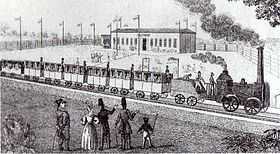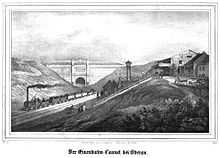Leipzig–Dresden railway
| Leipzig Hbf–Riesa–Dresden-Neustadt | |||||||||||||||||||||||||||||||||||||||||||||||||||||||||||||||||||||||||||||||||||||||||||||||||||||||||||||||||||||||||||||||||||||||||||||||||||||||||||||||||||||||||||||||||||||||||||||||||||||||||||||||||||||||||||||||||||||||||||||||||||||||||||||||||||||||||||||||||||||||||||||||||||||||||||||||||||||||||||||||||||||||||||||||||||||||||||||||||||||||||||||||||||||||||||||||||||||||||||||||||||||||||||||||||||||||
|---|---|---|---|---|---|---|---|---|---|---|---|---|---|---|---|---|---|---|---|---|---|---|---|---|---|---|---|---|---|---|---|---|---|---|---|---|---|---|---|---|---|---|---|---|---|---|---|---|---|---|---|---|---|---|---|---|---|---|---|---|---|---|---|---|---|---|---|---|---|---|---|---|---|---|---|---|---|---|---|---|---|---|---|---|---|---|---|---|---|---|---|---|---|---|---|---|---|---|---|---|---|---|---|---|---|---|---|---|---|---|---|---|---|---|---|---|---|---|---|---|---|---|---|---|---|---|---|---|---|---|---|---|---|---|---|---|---|---|---|---|---|---|---|---|---|---|---|---|---|---|---|---|---|---|---|---|---|---|---|---|---|---|---|---|---|---|---|---|---|---|---|---|---|---|---|---|---|---|---|---|---|---|---|---|---|---|---|---|---|---|---|---|---|---|---|---|---|---|---|---|---|---|---|---|---|---|---|---|---|---|---|---|---|---|---|---|---|---|---|---|---|---|---|---|---|---|---|---|---|---|---|---|---|---|---|---|---|---|---|---|---|---|---|---|---|---|---|---|---|---|---|---|---|---|---|---|---|---|---|---|---|---|---|---|---|---|---|---|---|---|---|---|---|---|---|---|---|---|---|---|---|---|---|---|---|---|---|---|---|---|---|---|---|---|---|---|---|---|---|---|---|---|---|---|---|---|---|---|---|---|---|---|---|---|---|---|---|---|---|---|---|---|---|---|---|---|---|---|---|---|---|---|---|---|---|---|---|---|---|---|---|---|---|---|---|---|---|---|---|---|---|---|---|---|---|---|---|---|---|---|---|---|---|---|---|---|---|---|---|---|---|---|---|---|---|---|---|---|---|---|---|---|---|---|---|---|---|---|---|---|---|---|---|---|---|---|---|---|---|---|---|---|---|---|---|---|---|---|---|---|---|---|---|---|---|---|---|---|---|---|---|---|---|
| Route number: | 500 | ||||||||||||||||||||||||||||||||||||||||||||||||||||||||||||||||||||||||||||||||||||||||||||||||||||||||||||||||||||||||||||||||||||||||||||||||||||||||||||||||||||||||||||||||||||||||||||||||||||||||||||||||||||||||||||||||||||||||||||||||||||||||||||||||||||||||||||||||||||||||||||||||||||||||||||||||||||||||||||||||||||||||||||||||||||||||||||||||||||||||||||||||||||||||||||||||||||||||||||||||||||||||||||||||||||||
| Line number: | 6363 | ||||||||||||||||||||||||||||||||||||||||||||||||||||||||||||||||||||||||||||||||||||||||||||||||||||||||||||||||||||||||||||||||||||||||||||||||||||||||||||||||||||||||||||||||||||||||||||||||||||||||||||||||||||||||||||||||||||||||||||||||||||||||||||||||||||||||||||||||||||||||||||||||||||||||||||||||||||||||||||||||||||||||||||||||||||||||||||||||||||||||||||||||||||||||||||||||||||||||||||||||||||||||||||||||||||||
| Line length: | 116.098 | ||||||||||||||||||||||||||||||||||||||||||||||||||||||||||||||||||||||||||||||||||||||||||||||||||||||||||||||||||||||||||||||||||||||||||||||||||||||||||||||||||||||||||||||||||||||||||||||||||||||||||||||||||||||||||||||||||||||||||||||||||||||||||||||||||||||||||||||||||||||||||||||||||||||||||||||||||||||||||||||||||||||||||||||||||||||||||||||||||||||||||||||||||||||||||||||||||||||||||||||||||||||||||||||||||||||
| Track gauge: | 1435 | ||||||||||||||||||||||||||||||||||||||||||||||||||||||||||||||||||||||||||||||||||||||||||||||||||||||||||||||||||||||||||||||||||||||||||||||||||||||||||||||||||||||||||||||||||||||||||||||||||||||||||||||||||||||||||||||||||||||||||||||||||||||||||||||||||||||||||||||||||||||||||||||||||||||||||||||||||||||||||||||||||||||||||||||||||||||||||||||||||||||||||||||||||||||||||||||||||||||||||||||||||||||||||||||||||||||
| Voltage: | 15 kV 16.7 Hz AC | ||||||||||||||||||||||||||||||||||||||||||||||||||||||||||||||||||||||||||||||||||||||||||||||||||||||||||||||||||||||||||||||||||||||||||||||||||||||||||||||||||||||||||||||||||||||||||||||||||||||||||||||||||||||||||||||||||||||||||||||||||||||||||||||||||||||||||||||||||||||||||||||||||||||||||||||||||||||||||||||||||||||||||||||||||||||||||||||||||||||||||||||||||||||||||||||||||||||||||||||||||||||||||||||||||||||
| Maximum incline: | 0.7 % | ||||||||||||||||||||||||||||||||||||||||||||||||||||||||||||||||||||||||||||||||||||||||||||||||||||||||||||||||||||||||||||||||||||||||||||||||||||||||||||||||||||||||||||||||||||||||||||||||||||||||||||||||||||||||||||||||||||||||||||||||||||||||||||||||||||||||||||||||||||||||||||||||||||||||||||||||||||||||||||||||||||||||||||||||||||||||||||||||||||||||||||||||||||||||||||||||||||||||||||||||||||||||||||||||||||||
| Minimum radius: | 270 | ||||||||||||||||||||||||||||||||||||||||||||||||||||||||||||||||||||||||||||||||||||||||||||||||||||||||||||||||||||||||||||||||||||||||||||||||||||||||||||||||||||||||||||||||||||||||||||||||||||||||||||||||||||||||||||||||||||||||||||||||||||||||||||||||||||||||||||||||||||||||||||||||||||||||||||||||||||||||||||||||||||||||||||||||||||||||||||||||||||||||||||||||||||||||||||||||||||||||||||||||||||||||||||||||||||||
| Maximum speed: | 200 | ||||||||||||||||||||||||||||||||||||||||||||||||||||||||||||||||||||||||||||||||||||||||||||||||||||||||||||||||||||||||||||||||||||||||||||||||||||||||||||||||||||||||||||||||||||||||||||||||||||||||||||||||||||||||||||||||||||||||||||||||||||||||||||||||||||||||||||||||||||||||||||||||||||||||||||||||||||||||||||||||||||||||||||||||||||||||||||||||||||||||||||||||||||||||||||||||||||||||||||||||||||||||||||||||||||||
Legend
| |||||||||||||||||||||||||||||||||||||||||||||||||||||||||||||||||||||||||||||||||||||||||||||||||||||||||||||||||||||||||||||||||||||||||||||||||||||||||||||||||||||||||||||||||||||||||||||||||||||||||||||||||||||||||||||||||||||||||||||||||||||||||||||||||||||||||||||||||||||||||||||||||||||||||||||||||||||||||||||||||||||||||||||||||||||||||||||||||||||||||||||||||||||||||||||||||||||||||||||||||||||||||||||||||||||||
The Leipzig–Dresden line is a German railway line. It was built by the Leipzig–Dresden Railway Company between 1837 and 1839. It was the first long-distance railway and the first railway using only steam traction in Germany. It also included the first standard gauge rail tunnel in continental Europe.
History
The line was built by the Leipzig–Dresden Railway Company (German: Leipzig-Dresdner Eisenbahn-Compagnie) established by twelve businessmen in 1835. It was brought into operation in several stages:

- 1837, 24 April: Leipzig–Althen (10.60 km)
- 1837, 12 November: Althen–Borsdorf–Gerichshain (4.32 km)
- 1838, 11 May: Gerichshain–Machern (2.93 km)
- 1838, 19 July: Weintraube–Dresden (8.18 km)
- 1838, 31 July: Machern–Wurzen (8.00 km)
- 1838, 16 September: Wurzen–Dahlen (17.53 km)
- 1838, 16 September: Oberau–Coswig–Weintraube (13.44 km)
- 1838, 3 November: Dahlen–Oschatz (9.56 km)
- 1838, 21 November: Oschatz–Riesa (13.07 km)
- 1839, 7 April: Riesa–Oberau (28.45 km)
On 7 April 1839, on the completion of the Elbe bridge at Riesa, the entire route from Leipzig to Dresden was finally opened. It included the 513 metre long Oberau Tunnel, the first standard gauge rail tunnel in continental Europe. It was preceded only by the Prince William Railway, a narrow-gauge plateway opened in 1831 and the Bavarian Ludwig Railway opened in 1835, which was a short line and was initially operated largely by horse-drawn trains, partly because it was located a long way from coal fields and no railways existed to convey coal to Nuremberg. In contrast the Leipzig–Dresden Railway used only steam traction from its beginning.
The Leipzig–Dresden Railway Company was nationalised in 1876 and became part of Royal Saxon State Railways. On 4 December 1915, the new unified Leipzig Hauptbahnhof (central station) opened; it including a Saxon section, which included the terminus of the line to Dresden.
After the First World War
1 April 1920 were the Royal Saxon State Railways (recently renamed the Saxon State Railway) were absorbed into the newly established German National Railways (Deutsche Reichsbahn). The Leipzig-Dresden line came under the administration of the Dresden Reichsbahn Directorate.

From 1 July 1933 to July 1934 the Oberau Tunnel was opened up and turned into a cutting, because the tunnel was not wide enough as the loading gauges was increased. Previously the distance between the two tracks in the tunnel did not allow two trains to pass.
The line in the communist era
In 1946 one of the two tracks was removed to provide the route as reparations to the Soviet Union. Even the previously four-track section between Coswig and Dresden-Neustadt was reduced to only one track. This meant that one of the most important main lines in Germany was reduced to only a fraction of its former performance. Temporarily trains were run one way from Leipzig and Dresden, while in the other direction they ran via Meissen and Döbeln.
In the early 1960s began the plans to electrify the route as part of the section Saxon triangle. In 1969 and 1970, the line was electrified and the second line was reinstalled throughout. The table below shows the dates of the completion of the electrification:
| Opening | Section | Comment |
|---|---|---|
| 25 September 1969 | Leipzig Hbf–Wurzen | |
| 28 September 1969 | Riesa–Dresden-Neustadt | |
| 31 May 1970 | Wurzen–Riesa | |
| 10 May 1974 | Althen–Borsdorf junction | Freight tracks |
Rebuilding since 1990
Soon after the fall of the Berlin Wall in 1989 and the beginning of moves towards German reunification, a high-speed line was planned between Leipzig and Dresden. Initially this provided for a continuous new alignment, but those plans were later reduced to the extensive redevelopment of the existing line in order to save costs. The redevelopment of the line was in the 1992 Federal Transport Infrastructure Plan as a new project and included as German Unity Transport Project No. 9.
Work began in May 1993, on the rebuilding of the existing line between Weißig and Priestewitz and a, little later, on the section between Leipzig-Ost and Engelsdorf and on bridge work between Wurzen and Oschatz. In 1996 at Oschatz the first Electronic interlocking in Saxony was put into operation.
The total estimated cost of the project is €1,451 million (as at July 2008), of which €775 million had been spent by end of 2007.[1]
Notes
- ↑ "Sachstandsbericht Verkehrsprojekte Deutsche Einheit (Progress report German Unity Transport Projects)" (PDF) (in German). Federal Ministry of Transport, Construction and Urban Affairs. July 2008.
References
- Becher, Udo (1981). Die Leipzig-Dresdner Eisenbahn-Compagnie (The Leipzig-Dresden Railway Company) (in German). Berlin: transpress VEB Verlag für Verkehrswesen.
- v. Fritz Borchert, ed. (1989). Die Leipzig-Dresdner Eisenbahn, Anfänge und Gegenwart einer 150-jährigen (The Leipzig-Dresden Railway, beginnings and the present of a 150-year-old) (in German). Berlin: transpress VEB Verlag für Verkehrswesen,. ISBN 3-344-00354-2.
- Schlegel, Gerhard, ed. (1989). Panorama der Eisenbahn zwischen Leipzig und Dresden (Panorama of the railway between Leipzig and Dresden) (in German). Berlin/Leipzig: Koedition der Verlage transpress, Berlin und Tourist. ISBN 3-344-00348-8., Reprint of an original from 1839
- Der Tag des Dampfrosses – Die Jungfernfahrt zwischen Leipzig und Althen am 24. April 1837 auf der ersten deutschen Ferneisenbahnstrecke (The day of the steam horse - The first trip between Leipzig and Althen on 24 April 1837 of the first German long-distance railway) (in German). Hrsg. Pro Leipzig e. V. 2006. ISBN 978-3-936508-22-2.
External links
 Media related to Leipzig–Dresden railway at Wikimedia Commons
Media related to Leipzig–Dresden railway at Wikimedia Commons